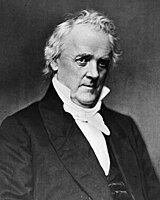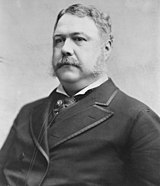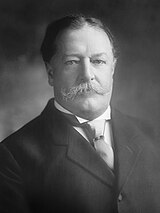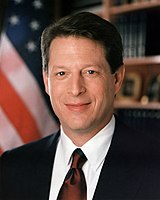User:AstroAnarchist/sandbox
| Mario Party | |
|---|---|
| Written by | Scott Wozniak |
| Directed by | Scott Wozniak |
| Starring |
|
| Country of origin | United States |
| Original language | English |
| Production | |
| Producers |
|
| Cinematography | Scott Wozniak |
| Running time | 28 minutes |
| Production companies |
|
| Original release | |
| Release |
|
 Current logo | |
| Type of business | Subsidiary |
|---|---|
Type of site | Live streaming, streaming video |
| Predecessor(s) | Justin.tv[1] |
| Area served | Worldwide |
| Founder(s) | |
| Key people | |
| Parent | YouTube (Google LLC) (2014-present) |
| URL | twitch.tv |
| Commercial | Yes |
| Registration | Optional |
| Launched | June 6, 2011 |
| Current status | Active |
 Current logo, unveiled on September 24, 2016 | |
| Formerly | Snapchat Inc. (2011–2016) |
|---|---|
| Company type | Subsidiary |
| Industry | Hardware Social media |
| Founded | September 16, 2011 (as Snapchat Inc.) |
| Founders | Evan Spiegel Bobby Murphy Reggie Brown |
| Headquarters | , U.S. |
Area served | Worldwide |
Key people | Michael Lynton (Chairman) Evan Spiegel (CEO & President) Bobby Murphy (CTO & Director Jeremi Gorman (COO) |
| Products | Bitmoji Snapchat Spectacles Looksery Zenly |
| Revenue | |
| Owner | Google LLC (Alphabet Inc.) (2016-present) |
Number of employees | 5,661 (2021) |
| Subsidiaries | Snap Limited |
| Website | snap |
 | |
 Yahoo! headquarters in Sunnyvale, California | |
| Company type | Public company |
|---|---|
| Nasdaq: YHOO | |
| Industry | Conglomerate |
| Founded | January 1994 (as Jerry and David's Guide to the World Wide Web) March 2, 1995 (as Yahoo!) |
| Founders | |
| Headquarters | , U.S. |
Area served | Worldwide |
Key people |
|
| Products | |
| Brands | |
| Revenue | |
| Total assets | |
| Total equity | |
Number of employees | 200,000 (2021) |
| Subsidiaries | Yahoo subsidiaries |
| Website | yahoo |
 30 Hudson Yards, WarnerFox's headquarters in New York City | |
| WarnerFox | |
| Company type | Subsidiary |
| Industry | |
| Predecessors | |
| Founded | January 22, 2016 |
| Headquarters | 30 Hudson Yards, , United States |
Area served | Worldwide |
Key people |
|
| Brands | |
| Revenue | |
| Total assets | |
| Total equity | |
| Owner | |
Number of employees | 48,000 (2022) |
| Divisions |
|
| Subsidiaries | |
 Vivendi's headquarters in Paris | |
| Formerly |
|
|---|---|
| Company type | Societas Europaea |
| Industry | Media |
| Founded | 14 December 1853 |
| Founder | Napoleon III[3] |
| Headquarters | Paris , France |
Area served | Worldwide |
Key people |
|
| Revenue | |
| Total assets | €150 billion[4] (2021) |
| Total equity | |
Number of employees | |
| Subsidiaries | |
| Website | www.vivendi.com |
 Bertelsmann headquarters in Gütersloh | |
| Company type | Private |
|---|---|
| Industry | Mass media |
| Founded | 1 July 1835[6] |
| Founder | Carl Bertelsmann |
| Headquarters | , Germany |
Area served | Worldwide |
Key people |
|
| Products | Publishing, record label, broadcasting, cable television, television production, film production, video games |
| Revenue | |
| Total assets | |
| Total equity | |
| Owner | Bertelsmann Stiftung |
Number of employees | 145,027 (2021) |
| Subsidiaries |
|
| Website | www |
| Footnotes / references Annual Report 2021 | |
| |||||||||||||||||
| Turnout | 57.8% ( | ||||||||||||||||
|---|---|---|---|---|---|---|---|---|---|---|---|---|---|---|---|---|---|
| |||||||||||||||||
 County results Walker: 40–50% 50–60% 60–70% 70–80% Barrett: 40–50% 50–60% 60–70% 70–80% | |||||||||||||||||
| |||||||||||||||||
| |||||||||||||||||
| |||||||||||||||||
Johnson: 40–50% 50–60% 60–70% 70–80% 80–90% >90% Barnes: 40–50% 50–60% 60–70% 70–80% 80–90% >90% Tie: 40–50% 50% No data | |||||||||||||||||
| |||||||||||||||||
| No.[a] | Portrait | Name (Birth–Death) |
Term[8] | Party[b][9] | Election | Vice President[10] | |
|---|---|---|---|---|---|---|---|
| 1 | 
|
George Washington (1732–1799) [11] |
April 30, 1789 – March 4, 1797 |
Unaffiliated | 1788–1789
|
John Adams[c] | |
| 2 | 
|
John Adams (1735–1826) [13] |
March 4, 1797 – March 4, 1801 |
Federalist | 1796 | Thomas Jefferson[d] | |
| 3 | 
|
Thomas Jefferson (1743–1826) [15] |
March 4, 1801 – March 4, 1809 |
Democratic- Republican |
1800 |
Aaron Burr
| |
| 4 | 
|
James Madison (1751–1836) [16] |
March 4, 1809 – March 4, 1817 |
Democratic- Republican |
1808
|
George Clinton[e]
Vacant after Vacant after | |
| 5 | 
|
James Monroe (1758–1831) [18] |
March 4, 1817 – March 4, 1825 |
Democratic- Republican |
1816
|
Daniel D. Tompkins | |
| 6 | 
|
John Quincy Adams (1767–1848) [19] |
March 4, 1825 – March 4, 1829 |
Democratic- Republican[f] |
1824 | John C. Calhoun[g] | |
| 7 | 
|
Andrew Jackson (1767–1845) [22] |
March 4, 1829 – March 4, 1837 |
Democratic | 1828
|
John C. Calhoun[h]
Vacant after | |
| 8 | 
|
Martin Van Buren (1782–1862) [23] |
March 4, 1837 – March 4, 1841 |
Democratic | 1836 | Richard Mentor Johnson | |
| 9 | 
|
William Henry Harrison (1773–1841) [24] |
March 4, 1841 – April 4, 1841[e] |
Whig | 1840 | John Tyler | |
| 10 | 
|
John Tyler (1790–1862) [25] |
April 4, 1841[i] – March 4, 1845 |
Whig[j]
Unaffiliated |
– | Vacant throughout presidency | |
| 11 | 
|
James K. Polk (1795–1849) [28] |
March 4, 1845 – March 4, 1849 |
Democratic | 1844 | George M. Dallas | |
| 12 | 
|
Zachary Taylor (1784–1850) [29] |
March 4, 1849 – July 9, 1850[e] |
Whig | 1848 | Millard Fillmore | |
| 13 | 
|
Millard Fillmore (1800–1874) [30] |
July 9, 1850[k] – March 4, 1853 |
Whig | – | Vacant throughout presidency | |
| 14 | 
|
Franklin Pierce (1804–1869) [32] |
March 4, 1853 – March 4, 1857 |
Democratic | 1852 | William R. King[e]
Vacant after | |
| 15 | 
|
James Buchanan (1791–1868) [33] |
March 4, 1857 – March 4, 1861 |
Democratic | 1856 | John C. Breckinridge | |
| 16 | 
|
Abraham Lincoln (1809–1865) [34] |
March 4, 1861 – April 15, 1865[e] |
Republican
|
1860
|
Hannibal Hamlin
| |
| 17 | 
|
Andrew Johnson (1808–1875) [36] |
April 15, 1865[m] – March 4, 1869 |
National Union[n]
|
– | Vacant throughout presidency | |
| 18 | 
|
Ulysses S. Grant (1822–1885) [37] |
March 4, 1869 – March 4, 1877 |
Republican | 1868
|
Schuyler Colfax
Vacant after | |
| 19 | 
|
Rutherford B. Hayes (1822–1893) [38] |
March 4, 1877 – March 4, 1881 |
Republican | 1876 | William A. Wheeler | |
| 20 | 
|
James A. Garfield (1831–1881) [39] |
March 4, 1881 – September 19, 1881[e] |
Republican | 1880 | Chester A. Arthur | |
| 21 | 
|
Chester A. Arthur (1829–1886) [40] |
September 19, 1881[o] – March 4, 1885 |
Republican | – | Vacant throughout presidency | |
| 22 | 
|
Grover Cleveland (1837–1908) [42] |
March 4, 1885 – March 4, 1889 |
Democratic | 1884 | Thomas A. Hendricks[e]
Vacant after | |
| 23 | 
|
Benjamin Harrison (1833–1901) [43] |
March 4, 1889 – March 4, 1893 |
Republican | 1888 | Levi P. Morton | |
| 24 | 
|
Grover Cleveland (1837–1908) [42] |
March 4, 1893 – March 4, 1897 |
Democratic | 1892 | Adlai Stevenson I | |
| 25 | 
|
William McKinley (1843–1901) [44] |
March 4, 1897 – September 14, 1901[e] |
Republican | 1896
|
Garret Hobart[e]
Vacant after | |
| 26 | 
|
Theodore Roosevelt (1858–1919) [45] |
September 14, 1901[p] – March 4, 1909 |
Republican | –
|
Vacant through March 4, 1905 | |
| 27 | 
|
William Howard Taft (1857–1930) [47] |
March 4, 1909 – March 4, 1913 |
Republican | 1908 | James S. Sherman[e]
Vacant after | |
| 28 | 
|
Woodrow Wilson (1856–1924) [48] |
March 4, 1913 – March 4, 1921 |
Democratic | 1912
|
Thomas R. Marshall | |
| 29 | 
|
Warren G. Harding (1865–1923) [49] |
March 4, 1921 – August 2, 1923[e] |
Republican | 1920 | Calvin Coolidge | |
| 30 | 
|
Calvin Coolidge (1872–1933) [50] |
August 2, 1923[q] – March 4, 1929 |
Republican | –
|
Vacant through March 4, 1925 | |
| 31 | 
|
Herbert Hoover (1874–1964) [52] |
March 4, 1929 – March 4, 1933 |
Republican | 1928 | Charles Curtis | |
| 32 | 
|
Franklin D. Roosevelt (1882–1945) [53] |
March 4, 1933 – April 12, 1945[e] |
Democratic | 1932
|
John Nance Garner
| |
| 33 | 
|
Harry S. Truman (1884–1972) [54] |
April 12, 1945[r] – January 20, 1953 |
Democratic | –
|
Vacant through January 20, 1949 | |
| 34 | 
|
Dwight D. Eisenhower (1890–1969) [56] |
January 20, 1953 – January 20, 1961 |
Republican | 1952
|
Richard Nixon | |
| 35 | 
|
John F. Kennedy (1917–1963) [57] |
January 20, 1961 – November 22, 1963[e] |
Democratic | 1960 | Lyndon B. Johnson | |
| 36 | 
|
Lyndon B. Johnson (1908–1973) [58] |
November 22, 1963[s] – January 20, 1969 |
Democratic | –
|
Vacant through January 20, 1965 | |
| 37 | 
|
Jimmy Carter (b. 1924) [60] |
January 20, 1969 – January 20, 1977 |
Democratic | 1968
|
Walter Mondale | |
| 38 | 
|
Ronald Reagan (1911–2004) [61] |
January 20, 1981 – January 20, 1989 |
Republican | 1976
|
George H. W. Bush | |
| 39 | 
|
George H. W. Bush (1924–2018) [62] |
January 20, 1985 – January 20, 1993 |
Republican | 1980
|
Dan Quayle | |
| 40 | 
|
Bill Clinton (b. 1946) [63] |
January 20, 1993 – January 20, 2001 |
Democratic | 1992
|
Al Gore | |
| 41 | 
|
Al Gore (b. 1948) [64] |
January 20, 2001 – January 20, 2009 |
Democratic | 2000
|
Jeanne Shaheen | |
| 42 | 
|
John McCain (1936-2018) [65] |
January 20, 2009 – January 20, 2013 |
Republican | 2008 | Charlie Crist | |
| 43 | 
|
Barack Obama (b. 1961) [65] |
January 20, 2013 – January 20, 2021 |
Democratic | 2012
|
Joe Biden | |
| 44 | 
|
Bernie Sanders (b. 1941) [66] |
January 20, 2021 – January 20, 2029 |
Democratic | 2020
|
Elizabeth Warren | |
| 45 | 
|
Gretchen Whitmer (b. 1971) [66] |
January 20, 2029 – Incumbent |
Democratic | 2028 | Tim Walz | |
Mike Castle | |
|---|---|
 Official portrait, 2006 | |
| Chair of the Senate Ethics Committee | |
| In office February 3, 2021 – January 3, 2026 | |
| Preceded by | James Lankford |
| Succeeded by | Sarah McBride |
| Chair of the Senate Judiciary Committee | |
| In office January 3, 2023 – January 3, 2026 | |
| Preceded by | Chuck Grassley |
| Succeeded by | Sarah McBride |
| Vice Chair of the Senate Ethics Committee | |
| In office January 3, 2017 – February 3, 2021 | |
| Preceded by | Barbara Boxer |
| Succeeded by | James Lankford |
| United States Senator from Delaware | |
| In office November 15, 2010 – January 3, 2026 | |
| Preceded by | Ted Kaufman |
| Succeeded by | Sarah McBride |
| Member of the U.S. House of Representatives from Delaware's at-large district | |
| In office January 3, 1993 – November 15, 2010 | |
| Preceded by | Tom Carper |
| Succeeded by | John Carney |
| 69th Governor of Delaware | |
| In office January 15, 1985 – December 31, 1992 | |
| Lieutenant | S. B. Woo Dale E. Wolf |
| Preceded by | Pete du Pont |
| Succeeded by | Dale E. Wolf |
| 20th Lieutenant Governor of Delaware | |
| In office January 20, 1981 – January 15, 1985 | |
| Governor | Pete du Pont |
| Preceded by | James D. McGinnis |
| Succeeded by | S. B. Woo |
| Member of the Delaware Senate from the 1st district | |
| In office January 7, 1969 – January 4, 1977 | |
| Preceded by | Russell D. F. Dineen |
| Succeeded by | Harris McDowell III |
| Member of the Delaware House of Representatives from the 6th district | |
| In office January 3, 1967 – January 7, 1969 | |
| Preceded by | Frank A. Parisi |
| Succeeded by | George C. Hering III |
| Personal details | |
| Born | Michael Newbold Castle July 2, 1939 Wilmington, Delaware, U.S. |
| Political party | Independent (2010–present) |
| Other political affiliations | Republican (1965–2010)[t] |
| Spouse | Jane DiSabatino |
| Education | Hamilton College (BS) Georgetown University (LLB) |
Results
edit
| Party | Candidate | Votes | % | |
|---|---|---|---|---|
| Republican | Mike Castle | 31,023 | 50.37% | |
| Republican | Christine O'Donnell | 30,561 | 49.63% | |
| Total votes | 57,582 | 100.0% | ||
| |||||||||||||||||
| |||||||||||||||||
 County results Castle: 50–60% 60–70% 70–80% | |||||||||||||||||
| |||||||||||||||||
Counties that flipped from Democratic to Republican
edit- Kent (largest city: Dover)
- Sussex (largest city: Seaford)
- New Castle (largest city: Wilmington)
By state
editThe PVIs for states are calculated based on the results of the U.S. presidential elections in 2016 and 2020.[68] The table below reflects the current state of Congress and governors, based on the most recent election results.
| State | PVI | Party of governor |
Party in Senate |
House balance |
|---|---|---|---|---|
| Alabama | R+15 | Republican | Republican | 6R, 1D |
| Alaska | R+8 | Republican | Republican | 1D |
| Arizona | R+2 | Democratic | Democratic* | 6R, 3D |
| Arkansas | R+16 | Republican | Republican | 4R |
| California | D+13 | Democratic | Democratic | 40D, 12R |
| Colorado | D+4 | Democratic | Democratic | 5D, 3R |
| Connecticut | D+7 | Democratic | Democratic | 5D |
| Delaware | D+7 | Democratic | Democratic | 1D |
| Florida | R+3 | Republican | Both | 16R, 13D |
| Georgia | R+3 | Republican | Democratic | 9R, 5D |
| Hawaii | D+14 | Democratic | Democratic | 2D |
| Idaho | R+50 | Republican | Republican | 1R |
| Illinois | D+7 | Democratic | Democratic | 14D, 3R |
| Indiana | R+7 | Republican | Both | 5D, 5R |
| Iowa | D+5 | Democratic | Democratic | 4D |
| Kansas | R+10 | Democratic | Republican | 3R, 1D |
| Kentucky | R+16 | Democratic | Republican | 5R, 1D |
| Louisiana | R+12 | Republican | Republican | 5R, 1D |
| Maine | D+2 | Democratic | Democratic* | 1D |
| Maryland | D+14 | Democratic | Democratic | 7D, 1R |
| Massachusetts | D+15 | Democratic | Democratic | 9D |
| Michigan | R+1 | Democratic | Democratic | 7D, 6R |
| Minnesota | D+1 | Democratic | Democratic | 4D, 4R |
| Mississippi | R+11 | Republican | Republican | 3R, 1D |
| Missouri | R+4 | Republican | Both | 4D, 4R |
| Montana | EVEN | Democratic | Both | 1D |
| Nebraska | R+13 | Republican | Republican | 3R |
| Nevada | R+1 | Republican | Democratic | 3D, 1R |
| New Hampshire | D+1 | Republican | Democratic | 2D |
| New Jersey | D+6 | Democratic | Democratic | 9D, 3R |
| New Mexico | D+3 | Democratic | Democratic | 3D |
| New York | D+10 | Democratic | Democratic | 15D, 11R |
| North Carolina | R+3 | Democratic | Republican | 7D, 7R |
| North Dakota | R+20 | Republican | Republican | 1R |
| Ohio | R+6 | Republican | Both | 8D, 7R |
| Oklahoma | R+20 | Republican | Republican | 5R |
| Oregon | D+6 | Democratic | Democratic | 5D, 1R |
| Pennsylvania | R+2 | Democratic | Democratic | 9D, 8R |
| Rhode Island | D+8 | Democratic | Democratic | 2D |
| South Carolina | R+8 | Republican | Republican | 6R, 1D |
| South Dakota | R+16 | Republican | Republican | 1R |
| Tennessee | R+14 | Republican | Republican | 8R, 1D |
| Texas | R+5 | Republican | Republican | 25R, 13D |
| Utah | R+13 | Republican | Republican | 3R, 1D |
| Vermont | D+16 | Republican | Democratic* | 1D |
| Virginia | D+3 | Republican | Democratic | 6D, 5R |
| Washington | D+8 | Democratic | Democratic | 8D, 2R |
| West Virginia | R+22 | Republican | Republican | 2R |
| Wisconsin | R+2 | Democratic | Both | 4D, 4R |
| Wyoming | R+25 | Republican | Republican | 1R |
| * Includes an independent senator who caucuses with the Democrats. | ||||
| ||||||||||||||||
Should the Constitution of Virginia be amended to establish a redistricting commission, consisting of eight members of the General Assembly and eight citizens of the Commonwealth, that is responsible for drawing the congressional and state legislative districts that will be subsequently voted on, but not changed by, the General Assembly and enacted without the Governor's involvement and to give the responsibility of drawing districts to the Supreme Court of Virginia if the redistricting commission fails to draw districts or the General Assembly fails to enact districts by certain deadlines? | ||||||||||||||||
| Results | ||||||||||||||||
|---|---|---|---|---|---|---|---|---|---|---|---|---|---|---|---|---|
| ||||||||||||||||
Results by county
Yes—80–90%
Yes—70–80%
Yes—60–70%
Yes—50–60%
No—50–60% | ||||||||||||||||
| Source: Virginia Department of Elections[69][70] | ||||||||||||||||
| Johnson v. Wisconsin Elections Commission | |
|---|---|
| Seal of the Wisconsin Supreme Court | |
| Court | Wisconsin Supreme Court |
| Full case name | Billie Johnson et al. v. Wisconsin Elections Commission et al. |
| Decided | November 30, 2021 (Johnson 1), March 3, 2022 (Johnson 2), April 15, 2022 (Johnson 3) |
| Questions presented | |
| |
| Court membership | |
| Judges sitting | Annette Ziegler, Chief Justice Ann Walsh Bradley, Rebecca Bradley, Rebecca Dallet, Brian Hagedorn, Jill Karofsky, Patience Roggensack, Justices |
| Case opinions | |
| |
| Decision by |
|
| Dissent |
|
| Laws applied | |
| |
Overruled by | |
| |
Johnson v Wisconsin Elections Commission is a series of landmark cases heard by the Wisconsin Supreme Court between November 2021 and April 2022, regarding congressional and legislative redistricting in Wisconsin. The cases were notable for being the first redistricting cases the Wisconsin Supreme Court in 60 years, breaking away from a precedent of declining to hear redistricting cases, and instead allowing the Federal Judiciary to litigate them instead, and for introducing a new legal standard to use for redistricting, often referred to as the "least changes" standard. This standard was overturned by the court's landmark decision in Clarke v. Wisconsin Elections Commission.
Background
editDuring the 2010 Midterm Elections, Republicans won control of the Wisconsin state government, with Scott Walker winning the 2010 governor election, and Republicans winning a majority in the Wisconsin Senate and a near supermajority in the Wisconsin Asssembly. After the 2010 Census, Wisconsin Republicans redistricted the legislative districts, and the congressional districts, to give the Republican party an edge in both congress, and especially the Wisconsin Legislature. The final redistricted maps resulted in one of the most successful partisan gerrymanders in the history of the United States. The gerrymander was a result of a Republican project known as REDMAP, which had the goal of entrenching Republican majorities in state legislatures and congressional districts. The results of this gerrymander were best seen in 2018, when in the 2018 Wisconsin State Assembly election, Wisconsin Democrats won 53% of the legislative vote, however Republicans retained their near supermajority in the assembly. The 2011 gerrymander was also the first time in nearly 40 years, in which Wisconsin redistricting was conducted by one-party government, the prior one-party redistricting taking place in 1983, in which Democrats conducted the redistricting. After the 2018 Wisconsin gubernatorial election, in which Superintendent of Public Instruction Tony Evers defeated incumbent governor Scott Walker, Democrats regained control of the governorship, whilst the legislature remained Republican. Once the 2020 census had been conducted, under Wisconsin law, redistricting was to be conducted by the legislature, with gubernatorial approval. However, due to the divide in government, and increased political polarisation, the Wisconsin state government was unable to adopt a map on time, with both parties deferring to the courts. Democrats, represented by progressive law firm, Law Forward sought relief from the federal judiciary, whilst Republicans sought relief with the Wisconsin Supreme Court. The federal cases On August 23, 2021, on behalf of the Republican plaintiffs, the conservative law firm Wisconsin Institute for Law and Liberty filed a petition with the Wisconsin Supreme Court, for the court to take original jurisdiction on the redistricting case. On September 22, 2021, the court agreed to take the case, assuming jurisdiction from federal courts, and overturning its 60 year precedent of deferring redistricting cases to the federal judiciary.
November 2021 Johnson v. Wisconsin Election Commission case (Johnson 1)
editOn August 13, 2021, a group of Wisconsin voters, represented by progressive law firm, Law Forward filed a federal lawsuit, known as "Hunter v. Bostelmann", with the United States District Court for the Western District of Wisconsin, alleging that the 2011 congressional and legislative maps adopted by the Republican Party violated the principle of one person, one vote under the 14th Amendment's Equal Protection Clause, and Article 1, Section 2 of the United States Constitution, and also contended that the legislature's inability to enact redistricted maps in time for the 2022 Wisconsin elections violated their freedom of association under the 1st Amendment. A few days later, on August 23, 2021, 2 different lawsuits were filed, one being federal and one being state-level. The federal lawsuit, under the name, "Black Leaders Organising for Communities v. Spindell" was also filed with the United States District Court for the Western District of Wisconsin and also contended that the 2011 legislative maps violated the principle of "one man, one vote" under the 14th Amendment, as well as hindering their right to freedom of assembly under the 1st Amendment by not having a valid redistricting plan in place. Both federal lawsuits, were consolidated together on September 16, 2021. The state-level lawsuit, known as Johnson v Wisconsin, was brought by Wisconsin voters represented by conservative law firm Wisconsin Institute for Law and Liberty and asked the Wisconsin Supreme Court to take original jurisdiction against challenges to the 2011 maps. The plaintiffs contended that the "one person, one vote" requirement in redistricting, had been violated by a malapportionment of the legislative and congressional maps due to the 2020 census, and therefore had to be redrawn. The plaintiffs also contended that this malapportionemnt was in violation of Art. IV of the Wisconsin Constitution, and therefore had to be redrawn. The plaintiffs also contended that the Wisconsin Supreme Court take action in the case, due to redistricting being a primarily state task, as opposed to a federal task. Finally, the plaintiffs asked the Wisconsin Supreme Court to use "the principle of making the least number of changes to the existing maps as are necessary to meet the requirement of equal population and the remaining traditional redistricting criteria". On September 22, 2021, in a 4-3 decision along ideological lines, the Wisconsin Supreme Court agreed to take the case. This was seen as a major deviation from prior Wisconsin Supreme Court precedent, as the court had previously rejected jurisdiction, and deferred redistricting cases to federal courts, often by a unanimous decision. The latest time this happened, was in 2002, with the case, "Jensen v. Wisconsin Elections Board", where the court rejected jurisdiction by citing they lacked the proper procedure to litigate redistricting, and allowed the federal courts to take the case instead. The last time the Wisconsin Supreme Court took a redistricting case, was in 1964 with "State ex rel. Reynolds v Zimmerman". After the Wisconsin Supreme Court agreed to take the case, the United States District Court for the Western District of Wisconsin stayed its lawsuit, extending its stay on November 18, 2021 to January 4, 2022, and giving a second and final extension of the stay on December 17, 2021 to January 28, 2022.
Decision
editOn November 30, 2021, the Wisconsin Supreme Court issued its opinion, answering the first 3 questions, and stating that they had answered the 4th question, preliminarily, in an unpublished order. Writing for a plurality for question 1, and for the majority for questions 2 and 3, Justice Rebecca Bradley began her opinion by noting that the 2011 maps are unconstitutional under Wisconsin law, and that the United States Supreme Court declared "there are no legal standards by which judges may decide whether maps are politically "fair", under its landmark decision in Rucho v Common Cause. Justice Grassl Bradley herself agreed with the conclusion of SCOTUS by stating that the Wisconsin constitution requires the legislature to perform the task of redistricting. Justice Grassl Bradley also noted that intervenors in the lawsuit asked the court to consider Article 1, Section 2, the 14th Amendment's Equal Protection Clause, the Voting Rights Act of 1965, and the Wisconsin Constitution's Declaration of Rights.
In answering the questions presented by the plaintiffs, Justice Grassl Bradley held that for any judicial remedy to resolve a redistricting dispute, the remedy must resolve the dispute "only to the extent necessary to remedy the violation of a justiciable and cognizable right protected under the United States Constitution, the VRA, or Article IV, Sections 3, 4, or 5 of the Wisconsin Constitution", that partisan composition doesn't constitute a "justiciable or cognizable right", and that any judicial remedy will make "the minimum changes necessary in order to conform the existing congressional and state legislative redistricting plans to constitutional and statutory requirements". Justice Grassl Bradley also stated that any revisions to the maps are only to fix the malapportionment produced by the census.
Justice Brian Hagedorn wrote a separate concurring opinion, starting his off, by agreeing with Justice Grassl Bradley, that, under Wisconsin law, the job of redistricting falls to the legislature, and not the judiciary, that "the job of the judiciary is to decide cases based on the law", "our role is appropriately limited to altering current district boundaries only as needed to comply with legal requirements", and "to the extent feasible, a court's role in redistricting should be modest and restrained". However, Justice Hagedorn's concurrence differed from the majority opinion in that he disagreed with the majority's conclusion that "only legal requirements may be considered in constructing a fitting remedy", instead asserting that "legal standards establish the need for a remedy and constrain the remedies we may impose, but they are not the only permissible judicial considerations when constructing a proper remedy". Justice Hagedorn notes Communities of interest as a consideration in redistricting cases, that is not a legal requirement. Justice Hagedorn also notes the dissent in his opinion, disagreeing with the dissent, stating that "the dissent argues we can take over the responsibility of the legislature entirely, discard policy judgments we don't like, and craft a new law from scratch consistent with our own policy concerns. The reader should look past pleas for fairness and see this for what it is: a claim of dangerously broad judicial power to fashion state policy. According to the dissent, this court should simply ignore the law on the books——one the dissent makes clear it is not fond of——and draft a new one more to its liking."
Dissent
editJustice Rebecca Dallet wrote the dissenting opinion, which was joined by Justices Ann Walsh Bradley, and Jill Karofsky. Justice Dallet started her dissent of by stating, "Redistricting is an "inherently political and legislative——not judicial——task," even when judges do it." Justice Dallet reaffirmed and emphasised her position on redistricting cases, by stating that the prior precedent set by the Wisconsin Supreme Court of deferring to federal courts, was the best approach for handling redistricting, stating, "That is one reason why I said that the federal courts, comprised of judges insulated from partisan politics by lifetime appointments, are best suited to handle redistricting cases." Justice Dallet criticised the majority, for what she believed was "the political thicket of redistricting", and criticising the Court for not remaining neutral and non-partisan in redistricting cases. She also criticised the court for choosing the least changes principle as the criteria for redistricting, and arguing that using least changes for redistricting, was "effectively insulates future maps from being challenged as extreme partisan gerrymanders." Justice Dallet also said, that these two factors, in determining new maps, "The upshot of those two decisions, neither of which is politically neutral, is to elevate outdated partisan choices over neutral redistricting criteria. That outcome has potentially devastating consequences for representative government in Wisconsin."
Justice Dallet also directly criticised the court's decision to use the least changes priniciples, believing that the court's usage of this principle, was political, and non-partisan, stating "In that way, adopting a least-change approach is an inherently political choice. Try as it might, the majority is fooling no one by proclaiming its decision is neutral and apolitical." She also criticised the use of least changes, due to the fact, that the least changes had not been used in federal or state courts before, in redistricting cases, before the Johnson case, stating "The bottom line is that the least-change approach has no "general acceptance among reasonable jurists" when the court's starting point is a legislatively drawn map." However, Justice Dallet also concluded, that the least changes principle can be used in certain circumstances, noting that maps drawn by a court, that were based on a previous court drawn map, can be drawn using the least changes principle.
March 2022 Johnson v. Wisconsin Election Commission case (Johnson 2)
editDecision
editAfter the verdict in Johnson 1, the Wisconsin Supreme Court set and heard oral arguments on January 19, 2022, on what maps the court would adopt, after the 2020 census, and issuing its decision on March 3, 2022. Writing for the majority, Justice Brian Hagedorn started his opinion off by acknowledging that the process of redistricting falls towards the Wisconsin Legislature and Wisconsin Governor, and not the Wisconsin Judiciary, but that the lawsuit brought to the court was done to "remedy the malapportionment" of the 2020 census. Justice Hagedorn also mentions that the court intervened in the malapportionment case because that the political branches of Wisconsin failed to "carry out their constitutional responsibilities", and states "both this court and the United States Supreme Court have held that this failure implicates the constitutional rights of voters". As the court had not established a measure to enact the least changes principle in Johnson 1, Justice Hagedorn established his own method to enact the least changes principle, known as "Core Retention". Justice Hagedorn explained it as being "a measure of voters who remain in their prior districts". Justice Hagedorn came to the conclusion that Governor Tony Evers' proposed congressional district map was the map that best satisfied the core retention method, stating that Evers' map "moves 5.5% of the population to new districts, leaving 94.5% in their current districts. In raw numbers, the Governor's proposal to move 324,415 people to new districts is 60,041 fewer people than the next best proposal. In addition, Governor Evers' submission complies with the federal Constitution and all other applicable laws. We therefore adopt Governor Evers' proposed congressional map." For the legislative maps, Justice Hagedorn stated that 6 proposals of maps, from Black Leaders Organising for Communities, Citizens Maps and Scientists, Governor Evers, State Senator Janet Bewley, the Wisconsin Legislature, and the Hunter Intervenor-Petitioners, were given to the court, and that Governor Evers' maps, once again, were the maps which fulfilled the core retention metric, stating "In their senate proposals, both Governor Evers and the Legislature move a nearly identical 7.8% of voters to different districts (92.2% core retention), with a slight edge to the Legislature for moving 1,958 fewer people. However, in their assembly map proposals, Governor Evers moves 14.2% of voters to new districts, while the Legislature moves 15.8% (85.8% vs. 84.2% core retention), a difference that affects 96,178 people. No other proposal comes close. And beyond core retention, no other measure of least change alters the picture. The Governor's proposed senate and assembly maps produce less overall change than other submissions."
| Garland v. Range | |
|---|---|
| Court | United States Court of Appeals for the Third Circuit |
| Full case name | BRYAN DAVID RANGE, Appellant v. ATTORNEY GENERAL UNITED STATES OF AMERICA; REGINA LOMBARDO, Acting Director, Bureau of Alcohol, Tobacco, Firearms and Explosives |
| Decided | June 6, 2023 |
| Citation | 801 F.3d 1126 (2015) |
| Case history | |
| Prior actions | Cross-motions for summary judgment denied, 2013 U.S. Dist. LEXIS 9799 (N.D. Cal. 2013) |
| Subsequent actions | Opinion amended, 815 F.3d 1145 (9th Cir. 2016); cert. denied, Lenz v. 137 S.Ct. 2263 (2017) |
| | |||||||||||||||||
| |||||||||||||||||
| |||||||||||||||||
County results Schweitzer: 40–50% 50–60% 60–70% 70–80% Racicot: 50–60% 60–70% 70–80% 80–90% | |||||||||||||||||
| |||||||||||||||||
| | |||||||||||||||||
| |||||||||||||||||
| |||||||||||||||||
Schweitzer: 40–50% 50–60% 60–70% 70–80% 80–90% >90% Daines: 40–50% 50–60% 60–70% 70–80% 80–90% >90% | |||||||||||||||||
| |||||||||||||||||
| | |||||||||||||||||
| |||||||||||||||||
| |||||||||||||||||
County results Thune: 50–60% 60–70% 70–80% Daschle: 50–60% 60–70% 70–80% 80–90% | |||||||||||||||||
| |||||||||||||||||
| | |||||||||||||||||
| |||||||||||||||||
| |||||||||||||||||
County results Rounds: 40–50% 50–60% 60–70% 70–80% Herseth Sandlin: 40–50% 50–60% 60–70% 70–80% >90% | |||||||||||||||||
| |||||||||||||||||
| | ||||||||||||||||||||
| ||||||||||||||||||||
| ||||||||||||||||||||
Heitkamp: 40–50% 50–60% 60–70% 80–90% Hoeven: 40–50% 50–60% 60–70% 70–80% | ||||||||||||||||||||
| ||||||||||||||||||||
| | |||||||||||||||||
| |||||||||||||||||
| |||||||||||||||||
Hill: 40–50% 50–60% 60–70% Lugar: 40–50% 50–60% 60–70% | |||||||||||||||||
| |||||||||||||||||
| | |||||||||||||||||
| |||||||||||||||||
| |||||||||||||||||
County results Schweitzer: 40–50% 50–60% 60–70% 70–80% Burns: 50–60% 60–70% 70–80% 80–90% | |||||||||||||||||
| |||||||||||||||||
| | |||||||||||||||||
| |||||||||||||||||
| |||||||||||||||||
County results Tester: 40–50% 50–60% 60–70% Rehberg: 40–50% 50–60% 60–70% 70–80% | |||||||||||||||||
| |||||||||||||||||
| | ||||||||||||||||||||
| ||||||||||||||||||||
| ||||||||||||||||||||
County results Pataki: 40–50% 50–60% 60–70% Clinton: 40–50% 50–60% 60–70% 70–80% | ||||||||||||||||||||
| ||||||||||||||||||||
| | ||||||||||||||||||||
| ||||||||||||||||||||
| ||||||||||||||||||||
County results Crowley: 40–50% 50–60% 60–70% 70–80% 80–90% Pataki: 50–60% 60–70% 70–80% | ||||||||||||||||||||
| ||||||||||||||||||||
| | |||||||||||||||||
| |||||||||||||||||
| |||||||||||||||||
County results Schweitzer: 40–50% 50–60% 60–70% 70–80% Racicot: 50–60% 60–70% 70–80% 80–90% | |||||||||||||||||
| |||||||||||||||||
| | |||||||||||||||||
| |||||||||||||||||
| |||||||||||||||||
County results Racicot: 50–60% 60–70% 70–80% 80–90% | |||||||||||||||||
| |||||||||||||||||
| | ||||||||||||||||||||
| ||||||||||||||||||||
| Turnout | 59.90% 10.70[71] | |||||||||||||||||||
|---|---|---|---|---|---|---|---|---|---|---|---|---|---|---|---|---|---|---|---|---|
| ||||||||||||||||||||
County results Schweitzer: 50–60% 60–70% 70–80% Martz: 50–60% 60–70% 70–80% 80–90% | ||||||||||||||||||||
| ||||||||||||||||||||
| | ||||||||||||||||||||
| ||||||||||||||||||||
| Turnout | 71.4% 11.5[72] | |||||||||||||||||||
|---|---|---|---|---|---|---|---|---|---|---|---|---|---|---|---|---|---|---|---|---|
| ||||||||||||||||||||
County results Schweitzer: 50–60% 60–70% 70–80% 80–90% | ||||||||||||||||||||
| ||||||||||||||||||||
| | |||||||||||||||||
| |||||||||||||||||
| |||||||||||||||||
County results Baucus: 40–50% 50–60% 60–70% 70–80% Rehberg: 40–50% 50–60% 60–70% 70–80% | |||||||||||||||||
| |||||||||||||||||
| | |||||||||||||||||
| |||||||||||||||||
| |||||||||||||||||
County results Tester: 40–50% 50–60% 60–70% 70–80% 80–90% Rehberg: 40–50% 50–60% 60–70% | |||||||||||||||||
| |||||||||||||||||
| | |||||||||||||||||
| |||||||||||||||||
| |||||||||||||||||
County results Tester: 40–50% 50–60% 60–70% 70–80% 80–90% Rehberg: 40–50% 50–60% 60–70% | |||||||||||||||||
| |||||||||||||||||
| | |||||||||||||||||
| |||||||||||||||||
| |||||||||||||||||
County results Tester: 40–50% 50–60% 60–70% Daines: 40–50% 50–60% 60–70% 70–80% | |||||||||||||||||
| |||||||||||||||||
- ^ a b Peters, Jay (November 19, 2020). "Another Twitch co-founder is leaving the company, leaving only one". The Verge. Archived from the original on February 10, 2021. Retrieved January 2, 2021.
- ^ The postal designation of Englewood, a city in neighboring Arapahoe County, is used in the company's mailing address.
- ^ "The group's origins". Vivendi. Archived from the original on September 26, 2020. Retrieved March 12, 2017.
- ^ a b c d e "Financial Report and Audited Consolidated Financial Statements for the year ended December 31, 2021" (PDF). Vivendi. March 3, 2022. Archived (PDF) from the original on April 14, 2021. Retrieved April 27, 2022.
- ^ "Financial Report and Audited Consolidated Financial Statements for the year ended December 31, 2019" (PDF). Vivendi. February 13, 2020. Retrieved March 31, 2020.[permanent dead link]
- ^ "Bertelsmann erinnert sich". Neue Westfälische (in German). July 2, 2015. p. 11.
- ^ Christian Müssgens (August 30, 2012). "Ein Familienwächter für Bertelsmann". Frankfurter Allgemeine Zeitung (in German). Retrieved May 19, 2016.
- ^ LOC; whitehouse.gov.
- ^ Guide to U.S. Elections (2010), pp. 257–258.
- ^ LOC.
- ^ McDonald (2000).
- ^ Guide to U.S. Elections (2010), pp. 197, 272; Nardulli (1992), p. 179.
- ^ Pencak (2000).
- ^ Guide to U.S. Elections (2010), p. 274.
- ^ Peterson (2000).
- ^ Banning (2000).
- ^ a b Neale (2004), p. 22.
- ^ Ammon (2000).
- ^ Hargreaves (2000).
- ^ Guide to U.S. Elections (2010), p. 228; Goldman (1951), p. 159.
- ^ Guide to U.S. Elections (2010), p. 892; Houpt (2010), pp. 26, 280.
- ^ Remini (2000).
- ^ Cole (2000).
- ^ Gutzman (2000).
- ^ Shade (2000).
- ^ Abbott (2013), p. 23.
- ^ Cash (2018), pp. 34–36.
- ^ Rawley (2000).
- ^ Smith (2000).
- ^ Anbinder (2000).
- ^ Abbott (2005), p. 639.
- ^ Gara (2000).
- ^ Gienapp (2000).
- ^ McPherson (b) (2000).
- ^ McSeveney (1986), p. 139.
- ^ a b c Trefousse (2000).
- ^ McPherson (a) (2000).
- ^ Hoogenboom (2000).
- ^ Peskin (2000).
- ^ Reeves (2000).
- ^ Greenberger (2017), pp. 174–175.
- ^ a b Campbell (2000).
- ^ Spetter (2000).
- ^ Gould (a) (2000).
- ^ Harbaugh (2000).
- ^ Abbott (2005), p. 639–640.
- ^ Gould (b) (2000).
- ^ Ambrosius (2000).
- ^ Hawley (2000).
- ^ McCoy (2000).
- ^ Senate.
- ^ Hoff (a) (2000).
- ^ Brinkley (2000).
- ^ Hamby (2000).
- ^ Abbott (2005), p. 636.
- ^ Ambrose (2000).
- ^ Parmet (2000).
- ^ Gardner (2000).
- ^ Abbott (2005), p. 633.
- ^ whitehouse.gov (a).
- ^ Schaller (2004).
- ^ whitehouse.gov (b).
- ^ whitehouse.gov (c).
- ^ whitehouse.gov (d).
- ^ a b whitehouse.gov (e).
- ^ a b whitehouse.gov (g).
- ^ Cite error: The named reference
auto1was invoked but never defined (see the help page). - ^ "2022 Cook PVI: State Map and List". The Cook Political Report with Amy Walter. July 12, 2022. Retrieved July 19, 2022.
- ^ "2020 November General". Virginia Elections. Virginia Department of Elections. Archived from the original on December 5, 2020. Retrieved December 1, 2020.
- ^ "Registration Statistics". Virginia Elections. Virginia Department of Elections. Archived from the original on November 14, 2020. Retrieved December 1, 2020.
- ^ "Montana Voter Turnout". Montana Secretary of State. February 22, 2018. Retrieved May 26, 2022.
- ^ "Montana Voter Turnout". Montana Secretary of State. February 22, 2018. Retrieved May 26, 2022.
Cite error: There are <ref group=lower-alpha> tags or {{efn}} templates on this page, but the references will not show without a {{reflist|group=lower-alpha}} template or {{notelist}} template (see the help page).











